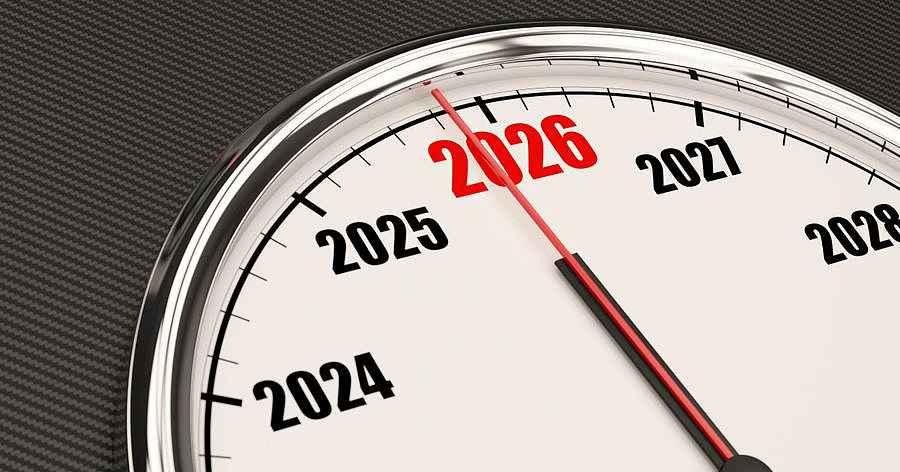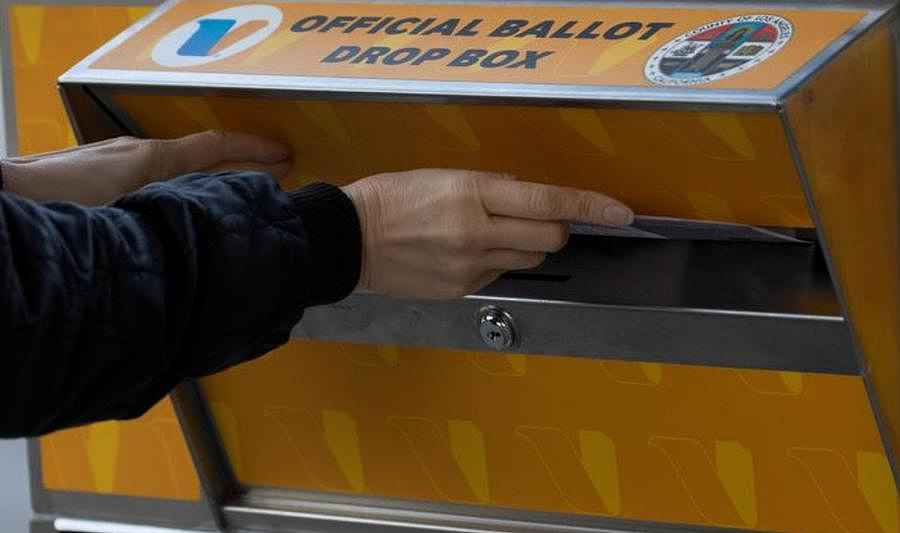






See listing of Recent and Most Popular articles on the Home Page
My World
Category: Citizenship / Topics: COVID-19 • Freedom • Government • Media • News • Politics • Research • Social Issues • Social Media • Social Unrest, Division • Voting & Elections
Election Eve Expectations
by Stu Johnson
Posted: October 31, 2020
Be patient, the 2020 Election is like none before and the counting will go on for days…
On Election Eve of 2016 I went to bed thinking that Hillary Clinton had won the presidential election. What a surprise the next morning to hear that Donald Trump had pulled off the Electoral College victory with narrow wins in key states. How could that happen? I would suggest both a tilt toward Clinton among those reporting it and reliance on polling techniques that had become more difficult because of technology and early voting.
For most of the years when television dominated election night coverage, "exit polls" proved useful in making reasonable predictions far ahead of the reports by election officials of the actual vote count. The first exit polls were literally done by stopping voters leaving the polling place and quizzing them, if willing, on their selection and something about themselves (to allow at least minimal demographic analysis).
Even though early voting was done in fewer locations than precinct voting on Election Day, it was spread over time, making the task of exit polling more difficult. The desire to be first with projections led news organizations to other means of gathering information on voting, using public opinion polling, which could be done by telephone or on-the-street interviews. Public opinion polling has had to wrestle with declining responses because answering machines and voice mail allowed potential respondents to filter out their calls. In addition, because of the pressure of time, such polling could not have the more carefully crafted sampling techniques of others surveys, so "weighting" became more important, but potentially hazardous, in order to account for lopsided samples that did not reflect the actual population.
After being embarrassed by calling the presidential race too early in 2016, the major news media had to evaluate their polling practices and prediction models. They may have through they were ready for 2020 until the COVID-19 pandemic hit as many states were entering the spring primaries, causing delays and confusion.
The monkey wrench of COVID
Many states were thrown into a panic over fears of public safety at polling places during their spring primaries. Furthermore, what the situation would be in November was totally uncertain. So, mail-in ballots were embraced in places where they have not been used before (except in the much more limited form of absentee ballots that required a legitimate reason you could not vote in person).
As I have pointed out in previous articles, voter registration and elections in the United States are administered by the individual states. That meant the states that adopted mail-in balloting for the first time did it in different ways as far as how ballots would get to voters and when and how voters would return those ballots—and that could be further complicated in states where each county is responsible for the details of running elections.
Some of the issues with mail-in ballots were covered in previous articles (see a list of articles on voting), so now that we are within days of Election Day, the important thing is the difference in how and when the various methods of voting will be counted.
In Illinois, where I live, the ballot must be postmarked or placed in a designated drop box by Election Day. They will then be counted after in-person votes (early and on Election Day) are tabulated. This also means that ballots that were mailed in may not arrive until days after November 3—but must be counted in the 14-day period for counting provisional ballots before the vote total is certified. That is not until November 17! That is why there has been such a push here to use mail-in ballots early enough to have them in hand by Election Day.
The handling of mail-in ballots vary by state, which is why there has been so much discussion—and legal maneuvering—about timing.
Preparing for the election like none before
In thinking about a number of bullet points to share about how we should approach the news coverage on the eve of the 2020 election, I was pleased to see an editorial in the Daily Herald (suburban Chicago) headlined "Voter's job includes patience, restraint on Election Day" that resonated with my own thoughts. So, what follows is an excerpt from that editorial (DH) and a few comments of my own (SJ).
Don't let social media jump ahead of real results.
- DH
-
You want this Election Day to be over. We all do. But you might need to reset your expectations a bit.
In part, that's because of the record number of mail-in votes. Local election officials have added staff and equipment to swiftly count mail-in ballots after polls close, even in the midst of COVID-19 distancing requirements. They're confident the large number of vote-by-mail ballots won't delay day-of counting.
Even so, there's a chance of a large influx of ballots after Election Day. A valid mailed ballot that's postmarked by Nov. 3 and arrives within the next 14 days will be counted in Illinois. That could swing some races. - SJ
-
There has been much discussion about disinformation, fake news, and foreign interference, particularly by China, Iran and Russia, to stir dissension in America. These efforts are aided by the algorithms used by Facebook and other social platforms to form the list of recommended links for each user.
Be especially wary of news you get from social media. It may be cleverly disguised as a valid source, but is actually the work of a subversive agent taking advantage of social media content recommendation algorithms.
Voting patterns might skew early counts.
- DH
-
Some election authorities will count in-person votes first, then mail-in votes. Some will do the opposite. Some will mix them in together.
That means early results across Illinois and the nation could reflect a strong lead that later dissipates—the so-called red mirage, or blue mirage—because mail-in ballots appear Republicans appear to be more likely this election to vote on Election Day and Democrats seem more likely to vote by mail. Some people, including some candidates, might call it a win before the full results are clear. Don't be one of those people. - SJ
-
Be wary of "expert" commentators. There are so many unknowns in this election, and so many variables between and within states, that it could well prove even more unpredictable than 2016—and baffle, even embarrass, the experts.
Slow returns don't mean it's fraud.
- DH
-
There's no reason to see a conspiracy if deliberative vote counting takes longer than usual.
Election fraud actually is pretty rare. A database by the Heritage Foundation lists 1,298 "proven instances of voter fraud" going back to 1979, resulting in 1,121 criminal convictions and 48 civil penalties. - SJ
-
Longer counting, especially in states that have newly introduced mail-in balloting, will happen. This will be unavoidable in those states, like Illinois, that have an Election Day deadline for submission (by postmark or placement in a drop box), which means legitimate ballots will still be arriving after Election Day and must be counted. Unfortunately, the requirements vary so much from state to state that there is already a morass of misinformation.
As I have pointed out in previous articles, the media's laser focus on rejecting President Trump's allegations of fraud seems to have blunted investigation of real problems. An election is a complicated process with many points where problems can occur, most in the form of technical and logistical glitches, but some as real attempts to influence the results, in turn desecrating the right to vote which we consider so sacred.
I fully concur with the Daily Herald editorial board's conclusion:
What's the takeaway for Election Day? Have patience. Don't jump to conclusions. Act responsibly, especially on social media. Then you'll have done your part.
Thanks for voting.
This article was also posted on Stu's InfoMatters blog.
Search all articles by Stu Johnson
Stu Johnson is principal of Stuart Johnson & Associates, a communications consultancy in Wheaton, Illinois. He is publisher and editor of SeniorLifestyle, writes the InfoMatters blog on his own website and contributes articles for SeniorLifestyle. • Author bio (website*) • E-mail the author (moc.setaicossajs@uts*) • Author's website (personal or primary**)* For web-based email, you may need to copy and paste the address yourself.
** opens in a new tab or window. Close it to return here.
Posted: October 31, 2020 Accessed 732 times
![]() Go to the list of most recent My World Articles
Go to the list of most recent My World Articles
![]() Search My World (You can expand the search to the entire site)
Search My World (You can expand the search to the entire site)
![]() Go to the list of Most Recent and Most Popular Articles across the site (Home Page)
Go to the list of Most Recent and Most Popular Articles across the site (Home Page)
 Loading requested view...
Loading requested view...